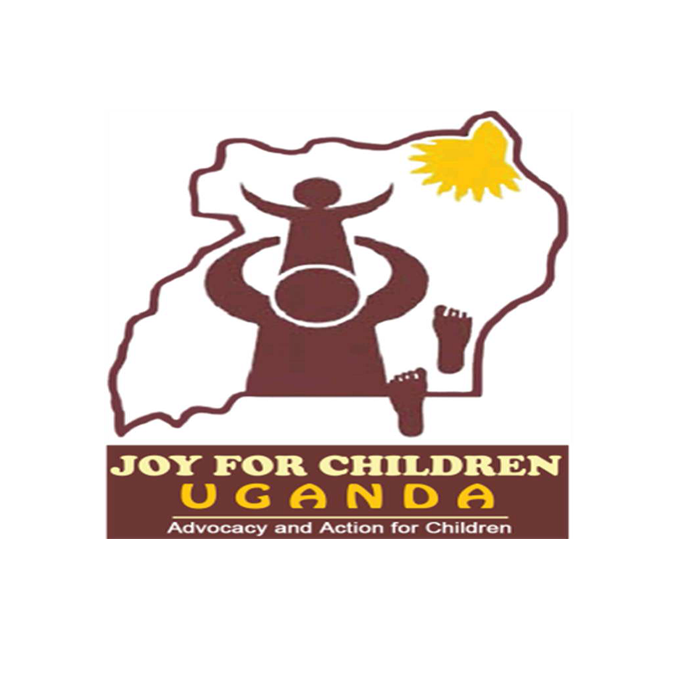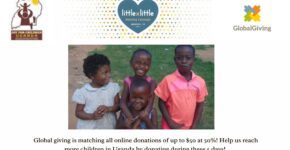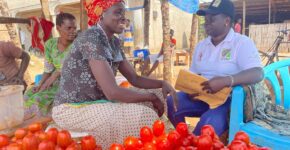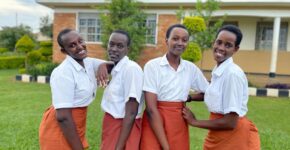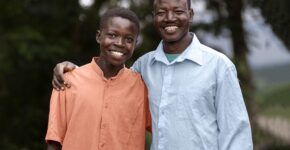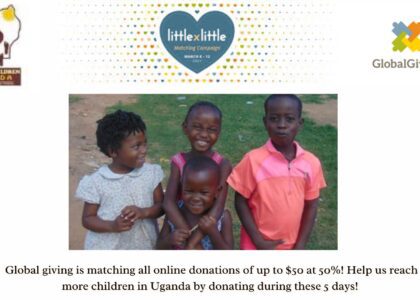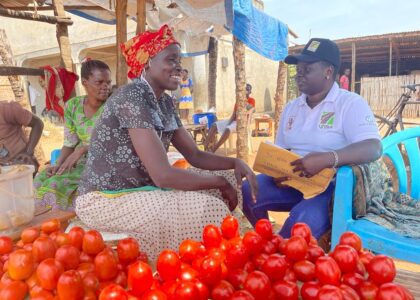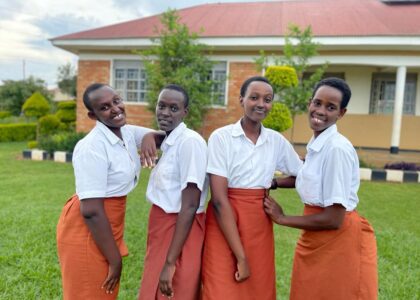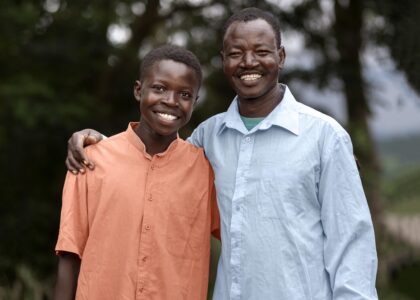Office of the United Nations High Commissioner for Human Rights
Palais Des Nations
1211 Geneva 10, Switzerland
15 February 2022
Re: Response to Call for submission for two reports on the issue of child, early and forced marriage
We jointly submit this letter to the OHCHR in response to the call for submissions on the issue of child, early and forced marriage (CEFM) and to provide information in advance of the submission of two upcoming thematic reports, a comprehensive report by the UN Secretary General to the General Assembly; as well as the report by the UN High Commissioner for Human Rights to the Human Rights Council.
Equality Now is an international human rights organisation with ECOSOC status working for the protection and promotion of the rights of women and girls worldwide. Joy for Children, based in Uganda, champions the rights of all children to live peacefully and thrive in the society with their basic needs provided for and without exploitation. Defence for Children International (DCI) is an organisation that seeks to advance the protection of the rights and welfare of children in Sierra Leone. Sauti Ya Wanawake Pwani (SYWP) is a women’s movement that creates a safe space for women to champion and challenge oppressive systems while advocating for change. Tanzania Women Lawyers Association (TAWLA) advocates for gender equality, promotion of human dignity and gender justice through policy, legal and institutional reforms, community action and media engagement. Association Malienne pour le Suivi et l’Orientation des Pratiques Traditionnelles (AMSOPT) works for the promotion and protection of women’s and girls’ rights in Mali.
Our submission provides information in relation to the regional perspective on CEFM in the African continent, with a specific focus on the countries of Kenya, Mali, Sierra Leone, Tanzania and Uganda. Due to space constraints, we have only provided information in response to certain specific questions in the call for submissions.
- A comprehensive report to the General Assembly on progress made towards ending CEFM, including in the context of the COVID-19 pandemic
Impact of the COVID-19 pandemic on child, early and forced marriage
Globally, in the context of the COVID-19 pandemic, we note that UNICEF estimated that over the next decade, up to ten million more girls will be at risk of becoming child brides as a result of the pandemic.[1] UNICEF underlined that the pandemic increases the risk of CEFM through five major pathways – interrupted education; economic shocks; disruptions to programmes and services; pregnancy and death of a parent.[2] As demonstrated by these five pathways, CEFM is not a stand-alone issue, instead it is linked with other cultural, social and economic issues such as female genital mutilation (FGM), poverty, and teenage pregnancies. As such, data on the impact of COVID-19 on CEFM must also be viewed holistically to account for the various factors that increase risk of CEFM.
In Uganda, marrying off a girl was perceived by parents as a quick escape from the financial hurdles faced by their families, and exacerbated by the pandemic.[3] Between March and September 2020, there was a 366.5% increase in pregnancies among girls aged 10-14 years – from 290 to 1,353 cases. In 2021, between January and June, Uganda reported 107 cases of teenage pregnancies and 146 child marriages through the Child Helpline alone.[4] On the other hand, a 2020 household survey of refugees in Kampala and settlements revealed that teenage pregnancies and CEFM had increased by 21% and 18%, respectively, during the pandemic.[5] These numbers are feared to continue increasing as the impacts of the pandemic continue to unfold.
In Kenya, the pandemic unleashed a myriad of ‘shadow pandemics’ on girls; from rape and sexual exploitation to CEFM and early and child pregnancy. For countless girls, the lockdown measures adopted by the government to reduce the spread of COVID since March 2020 made them vulnerable to gender-based violence (GBV), sexual exploitation, and child labour demonstrating that homes may not be the safe places they are perceived to be. With victims of GBV suddenly finding themselves locked in with their abusers, Kenyan women’s groups revealed that there was pressure on girls to consider child marriage as an option, in part due to access to education and livelihood being uncertain.
Sierra Leone does not have an official mechanism that consistently collects and publishes data on issues affecting children, hence data usually obtained by institutions come from both the public sector and non-governmental organisations (NGOs) that conduct surveys periodically or as and when resources are made available.The outbreak of COVID 19, with corresponding lockdowns and disruption of interventions to end CEFM, will certainly have an adverse effect on the anticipated reduction rate of CEFM. Additionally, the isolation of communities and closure of schools caused by COVID 19, coupled with household economic difficulties, would have increased the rate of CEFM, particularly in rural communities.
Measures taken to mitigate the impact of the COVID-19 Pandemic on CEFM
In Sierra Leone, several efforts have been undertaken to address CEFM during the pandemic period. Firstly, following the judgement of the ECOWAS Court of Justice, the government reversed its policy banning pregnant girls from school and is now supporting them to remain in school. Teenage pregnancy has been one of the major causes or pathways to CEFM with girls and their families resorting to marriage once the girls were not allowed in school. Reversing this policy enables teenage mothers to continue their education, thereby preventing CEFM. Secondly, NGOs are creating safe spaces for adolescent girls in communities by involving community-based partners who offer girls the opportunity to learn different skills and build their awareness. However, the coverage of community-based interventions is quite limited owing to the fact that these interventions are undertaken by donor-driven NGO projects and in fewer communities.
In Uganda, the impact of measures taken to avert CEFM during the pandemic has not yet been documented. Efforts of Ugandan CSOs, including Joy for Children, have been directed to increasing awareness through media campaigns on the impact of COVID-19 and CEFM; engaging communities to increase efforts towards changing social norms and behaviours; supporting families with basic care items to ease the economic and food insecurity pressures; increasing lobbying for policy[6] change; and creating local community networks that will increase access to services for girls through referral pathways.
In Kenya, efforts of CSOs, including Sauti ya Wanawake Pwani have been realised through: school-based interventions including school-based mentorship programmes and girls’ clubs, as well as delivery of life-skills education or comprehensive sexuality education and counselling; community engagement on issues around CEFM; policy engagement and advocacy; digital and media engagement in messaging around protection and participation of women and girls; virtual e-learning; provision of Sexual and reproductive health services; and male engagement initiatives.
II. A report to the Human Rights Council on progress, gaps and challenges in addressing CEFM and measures to ensure accountability
Legal Consequences of CEFM and the Application of the Legal Framework
Globally, according to UN Women, as of 2021, in 146 countries across the world, the minimum age of marriage is not set at 18 years of age for both men and women, without exceptions. In most of these countries, 18 is set as the minimum age of marriage under the law, but exceptions are allowed under religious or customary law; or children below the age of 18 are allowed to marry with parental consent, with judicial or government approval, or if the girl is pregnant or has given birth.[7] Further, 24% of countries allow girls to be legally married off at a younger age than boys with parental consent. [8]
In Africa, only 16 countries have set the minimum age of marriage as 18 years with no exceptions. 27 countries have the legal age of marriage as 18 years with exceptions such as parental consent, approval by a judge, and consent by a minister/senior public official at the request of the child’s legal representative. On the other hand, 11 countries have the legal age of marriage as under 18 years while one country does not specify the minimum age of marriage within its law.[9]
Raising the minimum age of marriage to 18 under the law, without exception, is crucial to addressing CEFM as recognized by the United Nations General Assembly Resolution 73/153 which urged States for the first time to adopt a minimum age of marriage at 18 and to ensure “coherence of these laws and policies at the local level”.[10] Such a law is not focused on criminalization and prosecution but rather on making explicit the States’, and societies’, understanding that young people need time to understand their independent circumstances before entering into a lifelong contract that will affect many aspects of their life. It protects young people from being forced into marriage, and for girls, from being married off to older men as a transfer of property, to settle scores, save the family “honour”, or establish inter-family ties.[11]
In Tanzania, the Law of Marriage Act (1971) still permits child marriage despite the fact that the Law of the Child (2009) defines a child as any person under the age of 18 years. Sections 13 and 17 of the Law of Marriage Act, when read together, permits the marriage of a girl of 15 years old, where there is parental consent, or 14 years old, where there is court approval.
The 2016 Amendment to the Education Act provides that any person who has a sexual relationship with or marries a student of primary or secondary school commits an offence and upon conviction he will be liable to serve a 30-year jail sentence. The Sexual Offences (Special Provision Act) 1998 (SOSPA) introduced the offence of statutory rape for persons under the age of 18. However, SOSPA makes an exception to the offence of rape, including statutory rape, where the woman is married to the perpetrator. This confusing and conflicting legal framework makes it harder to prosecute and enforce provisions of the law that criminalise CEFM in Tanzania.
Despite the current legal framework, CEFM continues to be widely practiced. Even in those few cases where perpetrators have been taken to justice, prosecution has always struggled with procuring evidence as witnesses, in most cases, tend to withdraw or become hostile. In most of these cases, a settlement has already been reached between the victim’s parents and relatives of the perpetrator.
In Kenya, CEFM is prohibited by the Marriage Act 2014, however cases of CEFM are never prosecuted in courts. As CEFM is linked to teenage pregnancy, prosecutors opt to charge the perpetrator with defilement as they find it easier to collect evidence relating to sexual violence as opposed to CEFM which, is difficult to prove due to its covert nature.
Sierra Leone has adopted contradictory laws that prohibit child marriage. Whilst the Child Rights Act 2007 prohibits marriage for anyone under 18 years, the Customary Marriage Act of 2008 allows marriage under 18 as long as there is a parental consent. The process of harmonising these laws and addressing the contractions has been quite slow. The Sexual Offences Act (amended 2019) criminalizes sex with anyone under 18 but exempts marriage as a defence. However, there is still no record of prosecution of any perpetrator of CEFM despite high rates of prevalence. All the cases that have been reported to the Family Support Unit of the police, government authorities or to community leaders have been resolved outside the criminal justice system. This is mainly because these cases are often perpetrated by the victims’ families, including parents, whose imprisonment might increase the vulnerability of the other children left behind and, due to the large number of individuals involved in these offences, it becomes complicated to investigate them. The other challenge is that quite often, unknown to the girls, parents inflate the ages of their girls when they want to subject them to CEFM. For example, in 2021, Defence for Children International monitored over 10 reported cases of CEFM from different parts of the country including 2 cases reported to the Ministry of Social Welfare in Makeni and 1 case reported to the Family Support Unit of police in Bo. Whilst these children were rescued from CEFM, no one was prosecuted.
In recent times, with the proliferation of girls empowerment programmes, including safe spaces at the community level, girls have become major sources of information on CEFM and they are often the ones that leak information to NGOs or the police when parents are planning to arrange weddings. The major lesson learnt from this is that unlike the adults, the present generation of girls and young women are convinced that CEFM is wrong and they themselves can lead the campaign to end it if given the right support.
Good practices and lessons learnt on the use of strategic litigation related to CEFM and their impact
In Tanzania, in 2016, a Public Interest case[12] was successfully won by Miss Rebeca Gyumi before the High Court of Tanzania, which challenged the constitutionality of section 13 and 17 of the Law of Marriage Act on the ground that they are discriminatory. The government appealed to the Court of Appeal of Tanzania challenging this decision and, in October 2019, the Court of Appeal declared that provision unconstitutional and gave the government one year to amend the provision. However, to date, this order has not been complied with.
In Uganda, there is currently a Motion for a parliamentary Resolution urging the government to develop and enforce policies and strategies to protect girls against escalating cases of teenage pregnancy and CEFM during and after the pandemic. The National Child Policy 2020[13], among others, were also adopted with the aim of tackling CEFM and teenage pregnancy and any other emerging forms of child rights violations and abuse.
The Ministry of Education and Sports in 2015 developed guidelines for the prevention and management of HIV/AIDs and unintended pregnancy in school settings in Uganda. They[14] were revised in 2020 to incorporate the measures and steps that should be taken in schools to prevent and manage pregnancy, as well as the girls’ re-entry.
In Sierra Leone, in 2019, local CSOs, including WAVES and CWS-SL, in collaboration with Defence for Children International and Equality Now, successfully won a case at the ECOWAS Court of Justice seeking, inter alia, an immediate revocation of a policy that prohibited pregnant girls from attending school and called on the government to develop strategies, programmes and nationwide campaigns that focus on addressing teenage pregnancy.[15] In 2019, the government reversed the ban and replaced it with a Radical Inclusion policy that contains strategies that provide education to those who have been excluded including pregnant girls, persons with disabilities and other groups.[16]
Good practises and lessons learnt on the use of international and regional human rights protection mechanisms
International and regional human rights mechanisms have played a great role in the African continent in ensuring state accountability on human rights including on CEFM.
With regard to Mali, in 2018, the African Court of Human & People’s Rights (ACtHPR) passed a landmark judgement in the case of APDF & IHRDA v. Republic of Mali.[17] The applicant human rights organisations challenged the validity of the provisions of Mali’s Persons and Family Code which set the minimum age of marriage at 18 for men and 16 for women, and contained a special exemption allowing marriage from 15 years, with the father or mother’s consent for the boy, and only the father’s consent for the girl. The ACtHPR found that Mali violated provisions of the Maputo Protocol and the African Charter on the Rights and Welfare of the Child (ACRWC). This groundbreaking decision, the first case in which the ACtHPR made a decision applying the Maputo Protocol, represents good practice in terms of application of strong, binding regional human rights obligations to enforce a minimum age of marriage under domestic law.
Following this judgement, a Bill on Gender-Based Violence (GBV) was drafted through the collaboration of CSOs, development partners and the National Programme on the fight against Gender-Based Violence. If passed, this Bill will raise the age of marriage to 18 years. However, the Bill has faced great opposition from religious leaders and as a result the process has stalled. The government has not sadly undertaken further efforts to comply with the judgement.
During Tanzania’s Universal Periodic Review (UPR) in 2021, the government received a number of recommendations relating to CEFM, including to amend legislation to prohibit all forms of CEFM and ensure access to education for pregnant schoolgirls and young mothers. Tanzania has committed to implement those recommendations.
There is a pending case before the African Committee of Experts on the Rights and Welfare of the Child (ACERWC). A communication was filed by the Legal and Human Rights Centre (LHRC), a national NGO in Tanzania, and the Centre for Reproductive Rights (CRR), challenging the policy under the Education Act that allow schoolgirls to be subjected to a mandatory pregnant test (the results of which have been used to expel those found pregnant). There is a clear linkage between teen pregnancy and CEFM and in most cases, those who drop out of school because of pregnancies end up married off to those responsible for the pregnancies. There is also another case pending before the ACtHPR, filed by Tike Mwambipile, Executive Director of Tanzania Women Lawyers Association (TAWLA) and Equality Now against Tanzania, challenging the application of the ban against pregnant girls from accessing and continuing with their studies in public schools even after delivery. While these cases are still pending, it is expected that potential favourable decisions upholding the rights of teenage girls to attend school will also have an impact in reducing CEFM in Tanzania.
In Sierra Leone, since the Defence for Children International established the Child Rights Coalition in 2007, the Coalition has submitted three alternative reports on the implementation of the UN Convention of the Rights of the Child (UNCRC) and one report on the African Charter on the Rights and Welfare of the Child. The Coalition has also submitted three child-centred reports on the UPR. All these reports included strong provisions on CEFM with practical recommendations. Fortunately, all the Concluding Observations and Recommendations contain, in stronger terms, statements that urge the government to take all necessary steps to end CEFM in Sierra Leone. There are good indications that several recommendations from the various mechanisms cited above have either been addressed by the government of Sierra Leone or are in progress.
Good practises learnt by NHRI to enhance State accountability
In the case pending before the ACtHPR on access to education for pregnant teenagers in Tanzania, the Commission for Human Rights and Good Governance (CHRAGG), a national human rights institution in Tanzania, was invited by the court and accepted to file an amicus curiae application on the ban to pregnant schoolgirls and its applicability. CHRAGG provided a very strong submission which supported the case of the applicants and demonstrated how the ban has lost its usefulness and the discriminatory effects it has for girls. Such a strong submission by a National Human Rights Institution (NHRI) would be considered good practice given the difficulties such institutions face in opposing the Tanzanian government.
In Sierra Leone, though the National Human Rights Commission was established over a decade ago, no one has ever taken a case to the Commission to hold the State accountable for violating the rights of girls. However, Defence for Children International and the Human Rights Commission have collaborated on several occasions in monitoring complaints on CEFM brought to the police and ensuring that victims receive maximum protection whilst investigations are going on. These collaborations often help in putting pressure on the police to expedite investigations.
Budgetary Allocations by the State for all measures related to CEFM
In Tanzania, from 2016, the then Ministry of Health and the Ministry of Community Development, Gender and Children were merged into the new Ministry of Health, Community Development, Gender, Elderly and Children. For the past 6 years, its budget, which is responsible for community development issues including GBV, has been focusing mostly on the health sector and not on other community development issues. Out of the entire ministry budget, only 6% in 2016/17[18], 3% in 2017/18[19] and 3.5% in 2020/21[20] were allocated for community development issues other than the health sector. Furthermore, there is no explicit budget item for addressing GBV issues, including CEFM, a budget line that can be tracked over the period to demonstrate government commitment and investment in addressing CEFM in Tanzania. In most cases, the government depends on resources from civil society organisations in reaching community members with educational and awareness programs on CEFM.
This demonstrates lack of commitment on the part of the Tanzanian government in addressing CEFM, as in the three sampled years, the government has not budgeted for holistic interventions to address CEFM such as raising awareness, clarifying community values, customs and practises.
In Sierra Leone, all State institutions such as the Family Support Unit of the Police, the MInistry of Social Welfare, the Ministry of Gender and Children’s Affairs and the Secretariat for Teenage Pregnancy receive very low budgetary allocations from the government and even when such budgets are allocated, they are hardly forthcoming. The work of these institutions are usually augmented by UN agencies such as UNICEF, UNFPA and NGO
[1] UNICEF, COVID-19: A Threat to Progress against Child Marriage, 2021, https://data.unicef.org/resources/covid-19-a-threat-to-progress-against-child-marriage/.
[2] Ibid.
[3]https://faweuganda.org/wp-content/uploads/2022/02/COVID-19-Impact-Study-on-Girls-and-Women-Report-2020.pdf
[5] UNCHR, Inter Agency Rapid Gender Analysis – COVID-19: Uganda Refugee Response, December 2020, https://data2.unhcr.org/en/documents/details/83437
[7] World Policy Analysis Center, When All Exceptions are taken into account, what is the minimum age of marriage for girls?, https://www.worldpolicycenter.org/policies/when-all-exceptions-are-taken-into-account-what-is-the-minimum-age-of-marriage-for-girls
[8] World Policy Analysis Center, Is there a gender disparity in the legal age of marriage?; https://www.worldpolicycenter.org/policies/is-there-a-gender-disparity-in-the-legal-age-of-marriage/is-there-a-gender-disparity-in-the-minimum-legal-age-of-marriage-with-parental-consent
[9] African Union, ‘Marriage Laws in Africa: A Compendium from 55 African Union Member States’ <Marriage-Laws-AU_FINAL_9-Nov-2018.pdf (wlsa.org.mz)>
[10] United Nations General Assembly, Resolution adopted by the General Assembly on 17 December 2018; https://www.un.org/en/ga/search/view_doc. asp?symbol=A/RES/73/153
[11] Equality Now, Words & Deeds: Holding Governments accountable in the Beijing +25 Review Process, 5th edition, https://www.equalitynow.org/news_and_insights/words_and_deeds/
[12] Civil Cause No. 5 of 2016
[13]https://www.unicef.org/uganda/media/8166/file/Final-Uganda-National%20Child%20Policy-October-2020-lores.pdf
[14]https://www.ungei.org/sites/default/files/2021-02/Revised-Guidelines-Prevention-Management%20-Teenage-Pregnancy-School-Settings-Uganda-2020-eng.pdf
[15] WAVES & CWS-SL and The Republic of Sierra Leone, ECOWAS Court of Justice, ECW/CCJ/JUD/37/19, https://ihrda.uwazi.io/ar/entity/1i7yfu3qr0cj?page=2
[16] https://www.equalitynow.org/press_release/press_sierra_leone_victory_mar_2020/
[17] [2018] AFCHPR 15, available at https://africanlii.org/afu/judgment/african-court/2018/15.
[18] Parliamentary Speech by the Minister of Health, Community Development, Gender, Elderly and Children during budget session for financial year 2016/2017
[19] Parliamentary Speech by the Minister of Health, Community Development, Gender, Elderly and Children during budget session for financial year 2017/2018
[20] Parliamentary Speech by the Minister of Health, Community Development, Gender, Elderly and Children during budget session for financial year 2020/2021
